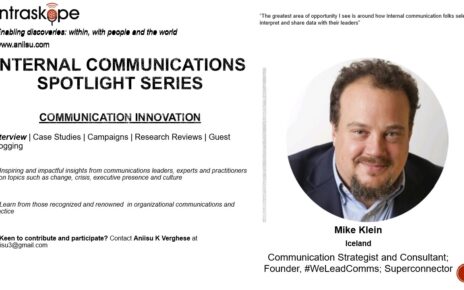Research on public relations measurement has caught the attention of practitioners and academicians for decades. The focus has shifted from evaluating output to measuring outcomes; from setting goals to engaging stakeholders better. Numerous platforms and collaborative efforts have resulted in broad principles and guardrails for public relation professionals to demonstrate value and business impact. The discussions on financial (investment and efficiencies) and non-financial (costs, risks and reputation) metrics have yielded a slew of measures that keep practitioners occupied. Terminologies such as Return on Investment, Return on Media Impact, Return on Target Influence and Return on Earned Media have probably created more confusion than clarity.
Reflect on these insights from industry research studies.
- According to the 2017 Global Communications Report, measurement among PR executives isn’t top of mind with leadership and creativity ranking higher. Likewise, when asked to rate the challenges facing growth of the function, measurement featured towards the bottom of the list. It is evident that no size fits all when it comes to measuring success of public relations measurement. What matters most are the goals of leveraging measurement for the appropriate purposes.
- In the 2019 PR Week & Boston University Bellwether Survey, 79% of respondents mentioned that senior management and board members expect more from communicators in terms of measurement and accountability although it ranked behind creativity as key success factors for the industry.
- A 2016 European Communications Monitor study confirmed that half of communication practitioners lacked analytical skills. Their ability to make sense of data and find time to understand it led to less than optimal attention on measurement. This is corroborated on the agency side. The Changing trend of PR Globally – an Agency Perspective highlights measurement, monitoring and ROI as the skill to develop in the future.
- A 2019 census among PR professionals in the UK revealed that the most important evaluation used was impressions and 26% of those surveyed didn’t use any PR evaluation methods.
With that in context, is it possible that we are missing the woods for the trees? I believe so. Rather than focus on solving the issues practitioners face to demonstrate value and gain credibility among stakeholders, the practice of measurement has chased shadows.
The goals of measurement are to help public relation professionals establish the relevance, effectiveness and efficiency of the function, make organizations more accountable for the brand and reputation, enable practitioners to take responsibility for results, champion continuous improvement, involve stakeholders in the journey and drive the right conversations.
Keeping these aspects in mind, the public relations community can do more with investing practitioners with a research mindset, building stronger skills and capabilities in measurement, creating greater awareness on the role of measurement in driving change, influencing leaders and inculcating a culture of continuous improvement.
In my experience, a communications team that understands and educates stakeholders on public relations measurement has a greater chance of getting a seat at the table, engaging in relevant conversations and getting more resources to create meaningful experiences for the organization.



